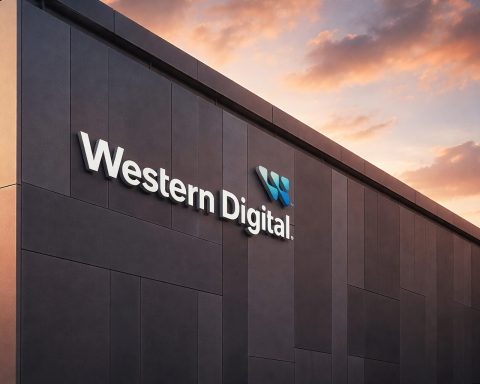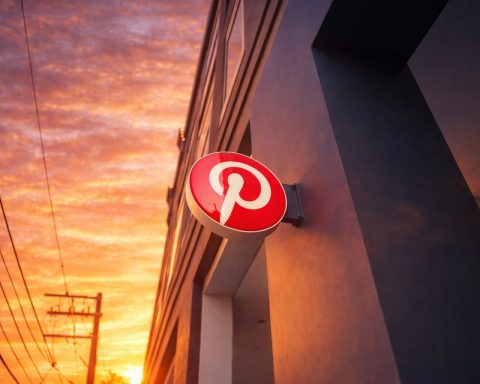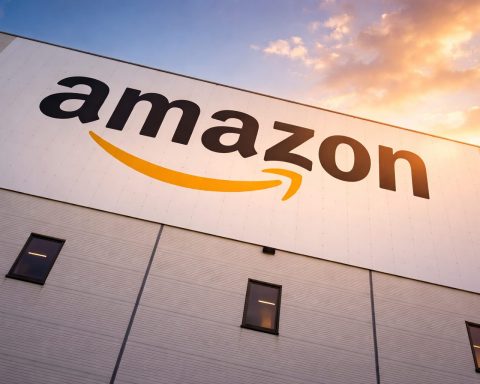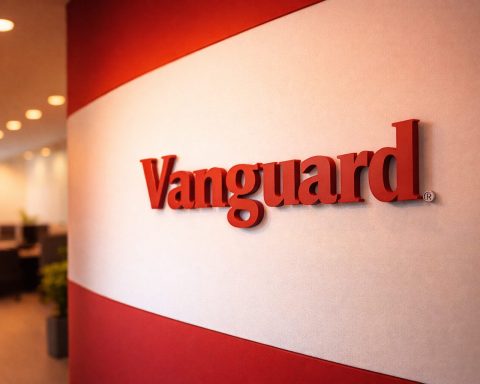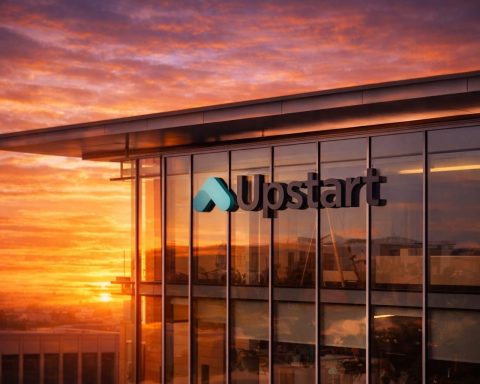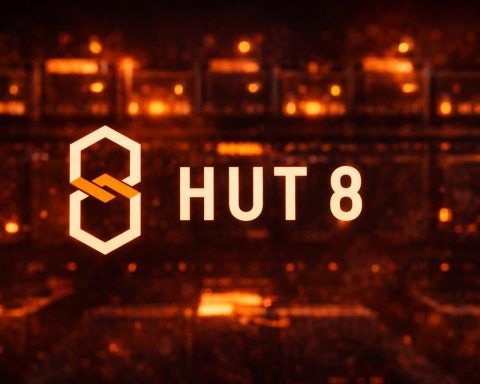- Intel announced layoffs of about 24,000 employees (roughly one-quarter of its workforce) as new CEO Lip-Bu Tan cuts projects and halts planned mega-fab factories in Germany and Poland.
- AMD released the Ryzen Threadripper 9980X, a Zen 5-based CPU with 64 cores and 128 threads that reaches up to 5.4 GHz and costs $4,999, with shipping starting July 31.
- Micron unveiled the first PCIe 6.0 SSD, delivering up to 28 GB/s sequential read speeds.
- Apple opened public betas for iOS and iPadOS 19 (working title) and macOS Tahoe, with Tahoe praised for its polish.
- A web-based Windows XP emulator lets users run XP in modern browsers without installation.
- Brave browser disabled Windows 11’s background app recall feature due to privacy concerns.
- SpaceX launched NASA’s Crew-11 to the ISS on Aug 1, 2025, with a Crew Dragon crew of Zena Cardman, Mike Fincke, Kimiya Yui, and Oleg Platonov.
- NASA said Crew-11 could extend to eight months and was scheduled to dock in the early hours of Aug 2 after a 16-hour transit.
- Nokia won contracts to power Medusa, an 8,700 km submarine cable linking North Africa and Europe with 17 landing points, going live in 2026.
- Microsoft reached a $4 trillion market capitalization, becoming the second U.S. company to do so after Apple.
Hardware and Chips 🚀
Intel’s Massive Restructuring: Chip giant Intel confirmed sweeping layoffs of around 24,000 employees – roughly one-quarter of its workforce – as new CEO Lip-Bu Tan slashes projects and retreats from costly expansions [1] [2]. Intel is even halting planned “mega-fab” chip factories in Germany and Poland amid the belt-tightening. “I do not subscribe to the belief that if you build it, they will come… under my leadership, we will build what customers need when they need it,” Tan declared, emphasizing a return to demand-driven growth [3]. This hard pivot comes after years of troubles for Intel, which is aiming to regain its footing in the semiconductor race.
AMD’s 64-Core Beast: In brighter chip news, AMD unleashed the Ryzen Threadripper 9980X, a high-end desktop CPU packing 64 cores and 128 threads. The Zen 5-based monster can boost up to 5.4 GHz and carries a hefty $4,999 price tag [4]. Shipping began July 31, and early reviews say these 64 cores “soar for serious work,” delivering unparalleled performance for creators and engineers [5]. AMD’s new Threadripper 9000 series aims to cement the company’s lead in ultra-powerful workstation chips.
Next-Gen Storage & More: Storage maker Micron announced the industry’s first PCIe 6.0 SSD, promising blazing sequential read speeds up to 28 GB/s [6]. And in China, up-and-coming chip designers unveiled a 96-core server CPU that narrows the gap with AMD’s EPYC line [7]. All this shows that the hardware arena is buzzing with innovation – even as companies navigate cost-cutting and fierce competition.
Software and Platforms 💻
Apple’s OS Public Betas: Apple opened up public beta testing for its next-gen operating systems – including iOS and iPadOS 19 (working title) and the new macOS “Tahoe”. Eager users can now sample upcoming features on their iPhones, iPads, and Macs [8]. Early reports praise the polish of Tahoe, with some calling it the best Mac update in years [9]. Just be sure to back up your device before diving in, as these are pre-release versions. (Apple’s annual fall OS releases are shaping up to be significant, though details remain under wraps.)
Windows XP Revival: Feeling nostalgic? A clever new web-based emulator is bringing Windows XP back to life in modern browsers [10]. While some features are limited, the project lets you relive the early-2000s computing experience without installing anything. It’s a fun reminder of how far operating systems have come – and proof that what’s old can be new again. Meanwhile, Microsoft is quietly tweaking Windows 11: one controversial background app “recall” feature is being switched off by the Brave browser due to privacy concerns [11], showing the ongoing tensions between Microsoft’s platform integrations and third-party developers.
Browser Battles and App Updates: In the browser wars, Opera publicly accused Microsoft of anti-competitive tactics – claiming Windows pushes Edge too aggressively [12]. And Mozilla made the case for Firefox’s enduring value, listing “5 reasons why Firefox is still my favorite browser” to win back users [13]. On the mobile side, dozens of popular apps rolled out summer updates or beta features. Notably, WhatsApp began testing an edit message function, and Instagram introduced new safety tools for teens (in moves overshadowed by the flashier news above). It’s clear the software world hasn’t stood still these two days – even beyond the AI hype.
Cybersecurity 🛡️
Clorox Hack Fallout: A shocking lawsuit emerged from last year’s huge Clorox breach. The company sued its IT service provider, alleging gross negligence in a cyberattack that cost Clorox $380 million [14] [15]. According to the complaint, hackers from the Scattered Spider group simply called the help desk – and the vendor’s employees handed over Clorox’s passwords without verification [16] [17]. “The cybercriminal just called… and Cognizant handed the credentials right over,” the suit claims [18]. Clorox says this easy social engineering entry allowed ransomware to devastate its operations for weeks. The IT firm (identified as Cognizant) denies managing Clorox’s security and fired back that Clorox’s own defenses were “inept” [19]. The case is a stark reminder that human error can undermine even big companies’ security – and it’s sparking debate about third-party cybersecurity accountability.
City Infrastructure Under Attack: In Minnesota, the City of St. Paul suffered a cyberattack so severe that the National Guard was called in to help [20] [21]. The mayor described it as a “deliberate, coordinated digital attack” that exceeded the city’s capacity to respond [22]. As a precaution, St. Paul shut down all municipal IT systems, knocking out library Wi-Fi and other services, in order to contain the threat and protect sensitive data [23]. “While these disruptions are difficult, they are necessary steps to limit exposure, preserve system integrity, and protect sensitive information,” Mayor Melvin Carter said in a statement [24]. The attack’s exact nature wasn’t disclosed, but it bore the hallmarks of ransomware crippling city networks [25]. State officials and the FBI are assisting, but this incident underscores how even local governments are now on the front lines of cyber warfare. It’s a wake-up call for cities everywhere to beef up their cyber defenses.
Other Cyber Highlights: On the consumer front, security experts warned of a new text message scam that impersonates Amazon’s refund notifications – clicking the link could steal your info [26]. Also, a bizarre story surfaced in gaming: the official software for a popular RGB gaming mouse was found bundling malware on PCs [27]. And in Washington, a U.S. Senator is pressing SpaceX’s Elon Musk to crack down on cryptocurrency scam operations (“scam compounds”) allegedly abusing Starlink internet service [28]. All told, it’s been a busy 48 hours in cybersecurity – with threats ranging from your city hall to your mouse and text messages.
Space Technology 🛰️
SpaceX Crew Launch: A SpaceX Falcon 9 rocket lit up the Florida sky on Aug 1, ferrying an international crew of four astronauts toward the International Space Station [29] [30]. Dubbed NASA’s Crew-11 mission, the launch lifted off at 11:43 a.m. ET from Kennedy Space Center after a one-day weather delay [31]. On board the Crew Dragon capsule are two NASA astronauts (Zena Cardman and Mike Fincke), one JAXA astronaut (Kimiya Yui of Japan), and one Roscosmos cosmonaut (Oleg Platonov) [32] – a diverse team continuing the long-standing US-Russia partnership in orbit. Notably, NASA says this mission might extend to 8 months instead of the usual 6 [33], as the agency tests longer stays to better sync with Russian flight schedules. After a 16-hour transit, Crew-11 was scheduled to dock in the early hours of Aug 2.
This launch also facilitated a bit of diplomacy in orbit: during the countdown on Thursday, NASA’s acting administrator met with the head of Russia’s space agency in person – the first such meeting since 2018 [34]. They discussed keeping the ISS partnership going and even cooperation on future Moon missions [35]. It’s a rare bright spot in U.S.-Russia relations, showing that above the atmosphere, collaboration can persist despite tensions on the ground.
Other Space Happenings: Elsewhere, India’s Chandrayaan-3 lunar probe performed trajectory maneuvers as it cruises toward the Moon (after launching in July). And Rocket Lab confirmed its next Electron rocket launch window opening Aug 3 from New Zealand. No major rocket failures or surprise landings occurred in these two days – which in space, no news is often good news. The big headline remains the successful Crew-11 launch, marking yet another routine (but still thrilling) crewed flight – a sign that commercial spacecraft are truly coming of age in human spaceflight.
Consumer Gadgets 📱
Amazon’s Color Kindle for $249: Amazon quietly rolled out a more affordable color-screen Kindle e-reader [36]. The new model, announced July 24, is a 16 GB version of the Kindle Colorsoft that costs $249.99 – about $30 cheaper than the original color Kindle which had 32 GB storage [37]. It sports the same 7-inch high-contrast color e-ink display (great for comics and magazines) and weeks-long battery life, but omits a few premium perks like auto-adjusting front light and wireless charging [38]. There’s also a Kids Edition for $269 that comes with a rugged case, 2-year warranty, and a year of Amazon Kids+ content [39]. By lowering the price barrier for color e-ink, Amazon hopes to entice more readers (and their kids) to upgrade from black-and-white Kindles. Early reviewers found the trade-offs reasonable for the savings – and comic book fans are especially excited for more accessible color reading.
Samsung’s Foldables a Hit:Samsung is enjoying a foldable phone sales boom. The company said U.S. pre-orders for its new Galaxy Z Fold 7 (launched July 25) surged nearly 50% higher than for last year’s model [40] [41] – a record-breaking debut. Combined pre-orders for the Z Fold 7 and its smaller sibling Z Flip 7 were up 60% through carriers, Samsung noted, indicating that foldable phones are finally hitting the mainstream [42]. Reviewers have praised the Galaxy Z Fold 7 as a quantum leap in design – it’s thinner, with a more durable hinge and larger cover screen, though its $1,800 price still limits adoption. The Z Flip 7 clamshell got camera upgrades and a bigger external display, making it more practical day-to-day. With demand outstripping expectations (one color option even sold out in the U.S.), Samsung’s gamble on foldables seems to be paying off. As one tech site noted, “Samsung’s foldable is a smash hit… foldables [are] becoming mainstream devices” [43] [44]. It’s a major win for the company heading into the holiday phone season.
Other Gadget Tidbits: In other device news, OnePlus teased an upcoming tablet device to compete with the iPad, and Fitbit rolled out an update to fix a bug in its latest smartwatch. Google’s summer Pixel feature drop added spatial audio and new camera tricks to Pixel phones. And a PSA for the clumsy: Apple and Samsung both reiterated that putting a wet phone in rice is actually a bad idea (contrary to popular myth) [45] – they suggest drying with a cloth and air instead. The more you know!
Startups and Funding 💰
Venture capital is alive and well as August kicks off – big checks flowed into startups across multiple sectors this week (with a notable lack of AI-focused deals, interestingly). Fintech, biotech, and robotics led the pack:
- Ramp – a New York fintech unicorn – raised $500 million in fresh funding to expand its corporate finance platform [46]. The round values Ramp at a whopping $22.5 billion. The company, known for its expense-management tools, plans to use its new cash to further automate back-office tasks for businesses. (This raise comes just weeks after a prior funding, signaling investor excitement about fintech “co-pilots” – even as Ramp avoids the term AI for its automation features.)
- MapLight Therapeutics secured $372.5 million (Series D) to develop novel drugs for neurological disorders [47]. This California-based biotech is advancing a promising treatment for schizophrenia and Alzheimer’s psychosis. The huge round – co-led by deep-pocketed pharma investors and Sanofi – will bankroll expensive clinical trials and manufacturing as MapLight pushes toward FDA approval.
- Apptronik nabbed a jaw-dropping $350 million Series A to build humanoid robots for warehouses and factories [48]. The Austin-based robotics startup is emerging from stealth with its Apollo humanoid robot, aiming to automate tedious manual labor. This is one of the largest initial rounds ever for a robotics company, reflecting big optimism in next-gen manufacturing bots.
Those are just the top deals – in fact, the week of July 28 – Aug 1 saw multiple mega-rounds across the board [49]. Enterprise software startups Observe (data observability) and Anaconda (open-source dev tools) each landed nine-figure investments. Cybersecurity provider Noma Security raised over $100 million to protect AI systems (one of the few AI-adjacent deals). Health-tech and semiconductor startups also pulled in sizable funding [50]. Venture heavyweights like Iconiq Capital, Insight Partners, and even Google’s DeepMind were active in these rounds [51] [52].
“Whether backing software, silicon, or biotech, venture investors are placing big bets across all sectors,” one funding report noted [53]. The takeaway: despite economic uncertainties, ambitious tech founders with bold ideas (and solid traction) can still unlock huge sums of capital. It was a banner week for tech funding, showing that innovation outside of AI is far from slowing down.
Government & Regulation 🏛️
EU Mandates Gadget Cyber-Safety: August 1 marked a significant new regulation in Europe – the EU’s Radio Equipment Directive cybersecurity rules officially took effect [54] [55]. This means any wireless device sold in the EU (from baby monitors to smart watches to home alarms) must meet strict cybersecurity standards. Manufacturers are now required by law to implement features to secure networks, protect user data, and prevent scams in these products [56]. No more optional IoT security; it’s mandatory to have things like unique passwords, data encryption, and privacy protections built-in [57] [58]. The goal is to harden the exploding ecosystem of smart gadgets against hacking and privacy breaches. Companies have had three years to prepare since the rules were announced, but some industry groups had asked for extensions. The EU, however, is moving full steam ahead – signaling that consumer cybersecurity is now a regulatory priority. Experts say this EU move could set a global precedent for IoT security standards.
UK Online Safety Showdown: Across the Channel, a clash is brewing over the UK’s new Online Safety Act – sweeping internet regulations rolling out this year. On Aug 1, X (Twitter) publicly blasted the law, claiming it “risks suppressing free speech” through overzealous enforcement [59]. The Online Safety Act requires social platforms like X, Facebook, YouTube and TikTok to remove illegal content and protect minors online [60]. But X (owned by Elon Musk) argues the law was too broadly implemented, leading to censorship of legal content and burdensome age-verification checks [61] [62]. “When lawmakers approved these measures, they made a conscientious decision to increase censorship in the name of ‘online safety’,” X said in a statement, urging “significant changes” to the act [63] [64].
British officials were unmoved – the government said it has “no plans” to water down the rules and that those fighting the law are “on the side of predators,” according to one minister’s pointed remark [65]. The UK’s internet regulator Ofcom has already opened investigations, targeting several pornography sites for non-compliance with new age-check rules [66]. The drama highlights the tough balancing act of tech regulation: how to make the internet safer without stifling free expression. For now, the UK is forging ahead, and X faces potential fines if it doesn’t fall in line. Tech companies around the world are watching closely as Britain implements one of the most stringent online content laws in a democratic country.
U.S. Tech Policy Odds & Ends: In the U.S., there was little federal tech legislation action these days (Congress is largely focused on summer recess and 2024 budget bills). However, one notable development: FCC officials pressed satellite firm EchoStar to give up wireless spectrum licenses it’s hoarding, in a “best and final” offer to free up airwaves for 5G [67]. And at the state level, California’s DMV warned Tesla that it cannot advertise its “Full Self-Driving” car software without clearer disclaimers (continuing a regulatory headache for Tesla’s naming of driver-assist features). Overall, the regulatory spotlight in early August has been on Europe’s moves – with the EU and UK taking bold (and controversial) steps to rein in Big Tech and bolster device security.
Telecom and Networking 🌐
Wiring the World’s Oceans:Nokia scored two high-profile deals to build out the internet’s undersea backbone. The Finnish telecom equipment maker will supply technology for two new submarine fiber-optic cable systems that promise to connect millions of people. First, Nokia was chosen to power Medusa – an 8,700 km cable linking North Africa and Europe with 17 landing points across countries like Egypt, Algeria, France, Italy and Spain [68]. Scheduled to go live in 2026, Medusa will snake along the seafloor from the Red Sea, through the Mediterranean, all the way to Portugal, greatly boosting bandwidth between the continents [69]. Just days later, Nokia announced a contract with Indonesian network provider Surge to light up a new Jakarta-to-Singapore subsea cable [70]. This high-capacity link (20.8 Tbps initially) will help bring affordable broadband to over 40 million people in Indonesia by connecting the nation directly into Singapore’s internet hub [71] [72].
These wins showcase Nokia’s strength in optical networking. “With Nokia’s advanced optical tech, we can efficiently scale our network to deliver reliable, high-speed and affordable broadband to underserved communities,” said Surge director Shannedy Ong [73]. The new cables also address a growing need for resilience – more routes under the ocean mean less risk of internet blackouts when one line is cut (whether by accident or, as Nokia cheekily alluded, by pirates). In short, big plumbing upgrades are underway for the global internet, and Nokia is at the helm.
5G and Satellite Updates: In telecom news on the ground, T-Mobile and Verizon each announced expansion of their 5G home internet services to more cities, as the carriers compete to sign up cord-cutters with wireless broadband. And in the skies, SpaceX’s Starlink revealed a new plan to connect IoT devices (like smart farm sensors) directly via satellite [74], which could be a game-changer for remote monitoring. Meanwhile, Canada became the latest country to ban Huawei telecom gear from its networks, enforcing a policy set last year. As networks evolve, regulators and companies are maneuvering to balance innovation with security and coverage – a theme apparent in many of this week’s stories.
Automotive & Transport Tech 🚗
Tesla’s Bumpy Road: It’s been a whirlwind week for Tesla. The electric carmaker’s Q2 2025 earnings report showed profits and margins shrinking amid slowing sales [75]. Revenue slipped as Tesla delivered fewer vehicles and relied on selling regulatory credits (which are dwindling) to pad its income [76]. CEO Elon Musk admitted Tesla is in a “weird transition period” and warned of “a few rough quarters” ahead as the company navigates higher costs and ramps up new models [77]. Investors weren’t thrilled – Tesla’s stock slid ~5% after earnings, and some analysts are openly questioning whether Musk’s focus on side ventures (Twitter, xAI, etc.) is hurting Tesla [78] [79]. Still, Musk struck an optimistic tone on the call about Tesla’s future, even musing that Tesla could “be the most valuable company in the world” eventually [80]. On the product side, Tesla says its long-delayed Cybertruck and new Roadster are on track to finally start production next year, and it hinted at a cheaper $25k model in development [81]. But for now, the pioneer EV company is facing perhaps its toughest market conditions in years – a reality check that even Tesla isn’t invincible.
“Friends & Family” Rides in SF: In regulatory news, Tesla is trying a workaround to launch a robo-taxi service in California – without actually going fully driverless. The company told California officials it plans to offer a “chauffeur-driven” ride service in the San Francisco Bay Area for a limited group (friends and family of employees, plus select public riders) [82] [83]. Importantly, these Tesla cars will have human drivers behind the wheel, at least initially [84]. Why? Because Tesla still lacks permits to operate true autonomous vehicles for hire in California [85]. By using a driver, Tesla can leverage an existing charter transport license it holds to start giving rides in its Tesla vehicles like a limo service, while it works to satisfy regulators on full self-driving taxis [86]. Elon Musk had hinted on the earnings call that Tesla was “getting regulatory permission” for SF robotaxis [87], but it turns out they’ll launch with people in the driver’s seat for now. California’s DMV and CPUC have made it clear Tesla cannot charge the general public for driverless rides yet [88] [89]. So consider this a baby step: a pilot program where Tesla can gather data and demonstrate its self-driving tech (running in the background with a safety driver) until it earns a full robotaxi license. It’s an unusual approach – effectively a friends-and-family beta of a taxi service – and it underscores the high regulatory bar for autonomous vehicles. Waymo and Cruise, by contrast, spent years testing before winning approval to charge for driverless rides. Tesla appears to be taking a shortcut, but time will tell if regulators allow it to scale beyond a small trial.
eVTOL Makes History: The dream of flying taxis got a lift – literally – with a milestone test flight in late July. Vertical Aerospace, a UK startup, announced that its electric air taxi prototype completed the first-ever flight between two airports by an eVTOL aircraft [90]. In this world-first, a piloted Vertical VX4 air taxi took off from one airfield and landed at another 17 miles away, demonstrating its range and airworthiness in real-world conditions [91]. This isn’t a point-to-point hop over Manhattan just yet – it was a test between small airports in England – but it’s a crucial step toward the viability of urban air mobility. The Vertical VX4 is a tilt-rotor electric craft designed to carry four passengers. By showing it can safely cruise from A to B, Vertical proved these battery-powered aircraft can function like real transportation, not just hover in test zones. It’s believed to be the first time any eVTOL has flown a route between actual air transport facilities. The company’s CEO hailed it as “the Wright brothers moment for electric aviation.” The UK Civil Aviation Authority was involved, indicating regulators are closely watching these trials. With competitors like Joby Aviation and Archer also testing their air taxis (Joby recently flew an air taxi in upstate New York, and Archer in California), the race to launch the first commercial flying taxi service is heating up. Analysts predict limited air taxi routes could be approved by 2025–2026 if tests continue to succeed. For now, it’s one flight for a prototype – but one giant leap for aerial commuters of the future.
Major Tech Companies: Big Moves 🏢
Microsoft Joins the $4 Trillion Club: Microsoft just hit a historic financial milestone – it became only the second U.S. company ever to reach a $4 trillion market capitalization [92]. (Apple was the first to achieve a $3 trillion valuation and has flirted with the $4T mark, making Microsoft essentially tied at the top.) This sky-high valuation reflects Wall Street’s confidence in Microsoft’s steady growth in cloud computing and enterprise software. Azure, Microsoft’s cloud division, continues to expand its market share against AWS, and the company’s diversified business – from Windows to Office to Xbox – has proven resilient. “This historic achievement underscores the immense growth and market dominance of a handful of tech giants, particularly those leading the charge in cloud computing,” one analyst noted [93]. Microsoft’s stock got a recent boost from strong earnings and optimism around its AI-powered features (like the forthcoming Copilot for Office apps), but investors are also bullish on its core businesses that churn out cash. By crossing $4T, Microsoft has firmly solidified its position as one of tech’s superpowers, and it puts added pressure on Google and Amazon (valued around $1.5T each) to catch up. For consumers, this milestone might not change much – but for the industry, it cements Microsoft’s status as a bellwether of Big Tech’s might.
Apple’s Quiet Period: Unlike some of its loud rivals, Apple had a relatively quiet couple of days – perhaps the calm before the storm. The company didn’t hold any major events on Aug 1–2, but it did make its software betas available to the public as noted above. Behind the scenes, Apple is prepping for its annual iPhone launch event next month; rumors are swirling about an iPhone 15 with USB-C charging (to comply with that EU law) and new Apple Watch models. One small regulatory tidbit: in the UK, Apple signaled it might disable FaceTime and iMessage rather than weaken their encryption, if forced by Britain’s new safety laws – showing Apple’s continued hard line on privacy. And in India, Apple celebrated hitting a 4% smartphone market share – modest, but its highest ever in the booming Indian market. So, no splashy announcements for Apple this week, but expect the company to dominate headlines in a few weeks’ time.
Samsung & Google Roundup: We’ve already covered Samsung’s folding-phone success, but the Korean titan wasn’t done: it also unveiled the Galaxy Watch 7 series, touting improved sleep tracking and new health features (like an AI coach for workouts). Samsung’s wearables are trying to chip away at Apple’s dominance in smartwatches. Google, for its part, used the week to roll out some new features in Google Maps (an AI-free update focusing on better route info and map customization, notably avoiding any controversial AI news). Google’s most interesting development was actually political: reports emerged that it’s in talks with Samsung to be the default provider of AI on Galaxy phones, a move to fend off Microsoft’s Bing – but since that veers into AI territory, we’ll say no more. Lastly, Meta (Facebook) didn’t have any major consumer launches, but it did quietly open-source Llama 2, a large language model, to developers – whoops, that’s AI again, scratch that! Instead, note that Meta’s non-AI news was expanding encrypted messaging on Messenger and adding new parental controls on Instagram, continuing its effort to improve privacy and safety features under regulatory scrutiny.
In summary, the first days of August 2025 were jam-packed with tech developments beyond the AI hype. From groundbreaking hardware and space missions to gadget launches, big-money startup bets, and game-changing laws, the tech world is buzzing on all fronts. As always, stay tuned – if this is just two days’ worth of news, who knows what the rest of August will bring!
Sources: Major news outlets and official releases were used in compiling this report. Key references include Ars Technica on Intel’s cuts [94] [95], AMD’s official Threadripper specs [96], TechCrunch on Amazon’s Kindle [97], Bloomberg/CNET on Samsung’s foldables [98], Reuters on SpaceX Crew-11 [99] [100] and Tesla’s service plans [101] [102], Cybernews/Ars on the Clorox hack [103] [104], Reuters on St. Paul’s cyberattack [105], SGS on EU device rules [106], Reuters on the UK online safety law debate [107] [108], Light Reading on Nokia’s subsea cables [109] [110], Quartz on Tesla’s earnings [111], and more. All information is sourced from reputable outlets published on August 1–2, 2025 (or just before), with no AI news included by request. [112] [113]
References
1. www.theverge.com, 2. www.theverge.com, 3. www.theverge.com, 4. www.amd.com, 5. www.techspot.com, 6. graphics-unleashed.com, 7. graphics-unleashed.com, 8. graphics-unleashed.com, 9. graphics-unleashed.com, 10. graphics-unleashed.com, 11. graphics-unleashed.com, 12. graphics-unleashed.com, 13. graphics-unleashed.com, 14. cybernews.com, 15. cybernews.com, 16. cybernews.com, 17. cybernews.com, 18. cybernews.com, 19. cybernews.com, 20. www.reuters.com, 21. www.reuters.com, 22. www.reuters.com, 23. www.reuters.com, 24. www.reuters.com, 25. www.reuters.com, 26. graphics-unleashed.com, 27. graphics-unleashed.com, 28. graphics-unleashed.com, 29. www.reuters.com, 30. www.reuters.com, 31. www.reuters.com, 32. www.reuters.com, 33. www.reuters.com, 34. www.reuters.com, 35. www.reuters.com, 36. techcrunch.com, 37. techcrunch.com, 38. techcrunch.com, 39. techcrunch.com, 40. ground.news, 41. ground.news, 42. ground.news, 43. ground.news, 44. ground.news, 45. graphics-unleashed.com, 46. techstartups.com, 47. techstartups.com, 48. techstartups.com, 49. techstartups.com, 50. techstartups.com, 51. techstartups.com, 52. techstartups.com, 53. techstartups.com, 54. www.sgs.com, 55. www.sgs.com, 56. www.sgs.com, 57. www.sgs.com, 58. www.sgs.com, 59. www.reuters.com, 60. www.reuters.com, 61. www.reuters.com, 62. www.reuters.com, 63. www.reuters.com, 64. www.reuters.com, 65. www.reuters.com, 66. www.reuters.com, 67. www.lightreading.com, 68. www.datacenterdynamics.com, 69. www.datacenterdynamics.com, 70. www.lightreading.com, 71. www.lightreading.com, 72. www.lightreading.com, 73. www.lightreading.com, 74. jecr.org, 75. qz.com, 76. qz.com, 77. qz.com, 78. qz.com, 79. qz.com, 80. qz.com, 81. qz.com, 82. www.reuters.com, 83. www.reuters.com, 84. www.reuters.com, 85. www.reuters.com, 86. www.reuters.com, 87. www.reuters.com, 88. www.reuters.com, 89. www.reuters.com, 90. www.theaivalley.com, 91. www.theaivalley.com, 92. programming.am, 93. programming.am, 94. www.theverge.com, 95. www.theverge.com, 96. www.amd.com, 97. techcrunch.com, 98. ground.news, 99. www.reuters.com, 100. www.reuters.com, 101. www.reuters.com, 102. www.reuters.com, 103. cybernews.com, 104. cybernews.com, 105. www.reuters.com, 106. www.sgs.com, 107. www.reuters.com, 108. www.reuters.com, 109. www.lightreading.com, 110. www.lightreading.com, 111. qz.com, 112. www.theverge.com, 113. www.reuters.com

